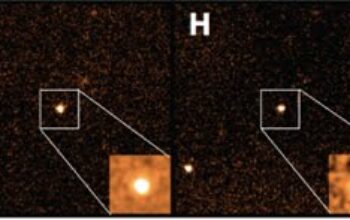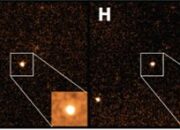The realm of computing has witnessed unprecedented advancements over the past few decades, with quantum computing emerging as a groundbreaking paradigm. Nonetheless, as the field develops, one may contemplate whether quantum computing is indeed the apotheosis of computational technology or if alternatives exist that could eclipse its promises. This exploration urges a critical reevaluation of existing paradigms, leading to the revelation of fascinating alternatives and new perspectives on the future of computation.
At the heart of the quantum computing discourse lies the extensive promise it holds for solving intractable problems. Leveraging the principles of superposition and entanglement, quantum computers can theoretically perform certain calculations at speeds unattainable by classical systems. Yet, several inherent challenges plague the practicality of quantum systems, such as error rates, qubit coherence times, and scalability. As researchers tirelessly work to resolve these issues, it is essential to scrutinize whether emerging technologies might offer a more pragmatic or accelerated solution to computational needs.
One prominent contender in the quest for superior computational capabilities is classical computing, which continues to evolve through enhanced architectures and innovative algorithms. Modern advancements, such as neuromorphic computing and quantum-inspired algorithms, have bolstered classical architectures, enabling them to tackle problems traditionally reserved for quantum systems. Neuromorphic computing, for instance, mimics the neural structure of the human brain, utilizing spiking neural networks to facilitate adaptable learning and real-time processing. By leveraging this biomimetic structure, classical computers can achieve impressive feats in areas like pattern recognition and data analysis.
Additionally, the advent of advanced algorithms, such as those based on machine learning, has catalyzed classical computing resurgence. These algorithms exploit vast datasets to detect patterns and make predictions, thereby enabling applications in various domains, from fraud detection to personalized medicine. The ongoing refinement of these algorithms, combined with powerful hardware advancements, reflects a promising trajectory for classical computing that may rival quantum systems in specific applications.
As one delves deeper into the landscape of computation, another paradigm warrants significant attention: optical computing. This innovative approach utilizes photons instead of electrons to perform calculations and process information, promising unprecedented speeds and parallelism. Unlike conventional electronic systems, which experience limitations due to resistive heating and interference, optical computing leverages the unique properties of light, potentially leading to more efficient and energy-saving solutions. With ongoing research aimed at harnessing photonic circuits and developing practical applications, optical computing stands poised as a formidable competitor to quantum systems.
Furthermore, DNA computing emerges as a fascinating alternative, employing biological materials for computation. By utilizing the inherent parallelism of DNA molecules, researchers have demonstrated the potential to solve complex problems, such as combinatorial optimization, through biochemical processes. While still in its nascent stages, DNA computing showcases an entirely different approach to information processing, one that could complement or even surpass quantum computing in specific applications, particularly in fields like bioinformatics and pharmaceuticals.
The intersection of biological and computational realms also gives rise to synthetic biology, an emerging discipline that aims to re-engineer natural biological systems to perform desired functions. As this field progresses, the integration of synthetic biology with computational frameworks could yield novel computing paradigms. For instance, genetically engineered organisms may be designed to calculate biological outcomes or simulate complex networks. This convergence demonstrates that tapping into the fundamental principles of biology may unveil new dimensions of computation otherwise inconceivable within classical or quantum dichotomies.
Despite the promising developments across these diverse fields, uncertainty persists regarding their efficacy in addressing universally challenging computational problems compared to quantum computing. Quantum computers are particularly adept at tasks such as integer factorization and simulation of quantum systems—problems of paramount importance in cryptography and materials science. Therefore, while alternatives abound, their applicability must be measured on an individual basis, contingent on the specific computational problem at hand.
Moreover, one cannot overlook the interdisciplinary nature of the aforesaid advancements. The convergence of fields such as computer science, physics, chemistry, and biology often leads to unexpected synergies. The unique interplay of ideas from disparate domains fosters an environment conducive to innovation, ultimately steering the trajectory of computational advancements. As scientists and researchers continue to probe the potential of these emerging technologies, the boundaries of current knowledge will undoubtedly be expanded.
In conclusion, the question of whether something surpasses quantum computing transcends a mere binary evaluation. The continuous evolution of classical computing, along with burgeoning fields such as optical computing, DNA computing, and synthetic biology, caters to a rich tapestry of computational possibilities. Each paradigm encapsulates its own strengths and weaknesses, presenting unique solutions to multifaceted problems. As the quest for computational supremacy advances, the exploration of these alternatives should neither diminish the significance of quantum computing nor impede its progress. Rather, the holistic advancement across various computational frameworks engenders a future where innovative solutions synergistically coexist, redefining our understanding of what computation can achieve.











